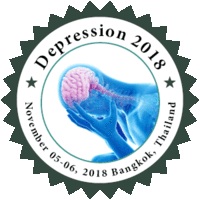
Michał Skalski
Department of Psychiatry, Medical University of Warsaw, Poland
Title: Pharmaco-electroencephalography-based assessment of antidepressant drug efficacy
Biography
Biography: Michał Skalski
Abstract
This study was partially financed from a grant from the National Science Center [Narodowe Centrum Nauki] (NCN2012/07/B/NZ7/04375) and statutory founds from Medical University of Warsaw. Pharmaco-encephalography (pharmaco-EEG) assesses the effects of drugs on brain bioelectrical activity.
Specific EEG patterns have been shown to be specific for individual classes of drugs (Herrmann and Schearer, 1986; Skubis, 1991; Szelenberger, 1990; Skalski et al., 1995):
- Anxiolytic drug effects: increased beta (beta 1) activity, decreased alpha power, and increased delta and theta power.
- Antipsychotic drug effects: increased power of theta and delta activity, decreased beta 1 power, increased slow-wave activity and reduced alpha power.
- Antidepressant drug effects – slowed alpha frequency, increased theta and fast beta (beta 2) activity.
- Psychostimulant (amphetamine-like) drug effects – decreased delta and theta power, increased alpha and beta power.
- Nootropic drug effects – decreased delta and theta power, increased alpha activity.
- Lithium effects – increased delta and theta power, slowed alpha activity.
We analyzed pharmaco-EEG profiles in 91 patients hospitalized at our Department of Psychiatry (Medical University of Warsaw) for major depression over an 8-week period. Thirty-nine (39) of those patients received tricyclic antidepressants (TCA), 35 received fluoxetine, and 17 received fluoxetine augmented with magnesium ions. All patients were evaluated with the Hamilton Depression Rating Scale (HDRS) and had their serum drug levels monitored.
Our study demonstrated a relationship between achieving remission (HDRS≤6 at week 8 of treatment) and obtaining a positive pharmaco-EEG profile 6 hours after administering the first dose in the group receiving fluoxetine treatment augmented with magnesium ions (p = 0.0091).

